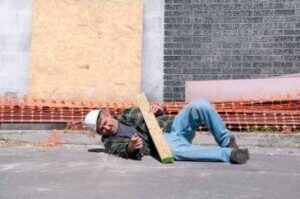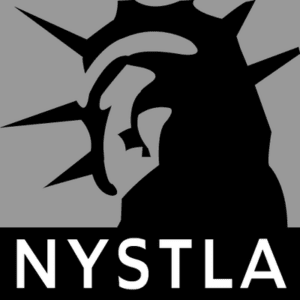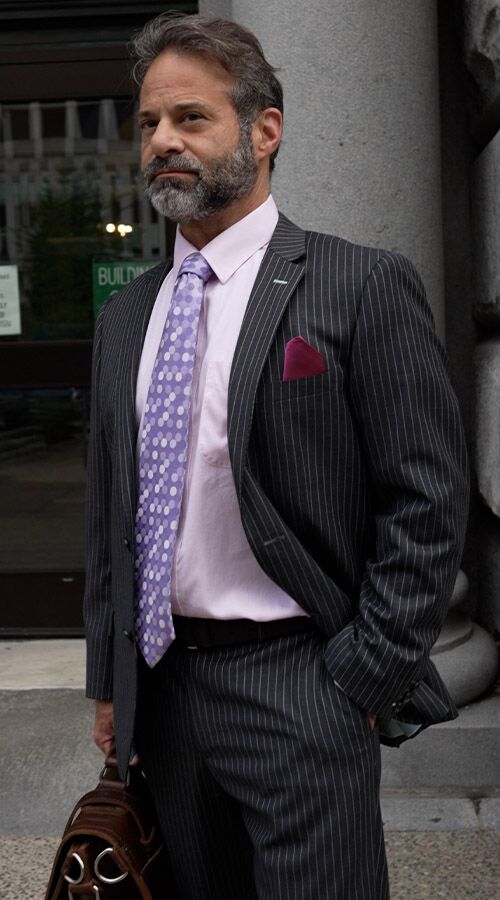Slip and fall accidents are some of the most common types of personal injury claims in New York. While these incidents might seem straightforward, proving negligence in a slip and fall case can be complex. Whether the fall occurred in a grocery store, on a sidewalk, or in a private home, understanding how to establish liability is key to securing compensation for injuries. Slip and fall cases fall under premises liability law, which holds property owners accountable for ensuring their premises are reasonably safe. To succeed in a claim, you must show that the property owner or occupier was negligent, leading to the accident.
In New York, negligence in slip and fall cases is determined by several factors. The injured party, known as the plaintiff, must prove that the property owner knew or should have known about the dangerous condition that caused the fall but failed to address it. This failure can range from not cleaning up a spill to ignoring structural defects. Additionally, the plaintiff must show that the property owner had a duty of care to maintain the premises in a safe condition. Establishing these elements in a legal claim can be challenging, but it is crucial for a successful outcome.
Understanding Duty of Care in Slip and Fall Cases
The concept of duty of care is central to any slip and fall case. Property owners in New York are legally obligated to ensure their premises are safe for visitors. This duty extends to both private and public property owners, such as homeowners, businesses, and municipal entities. For example, a grocery store owner has a responsibility to keep aisles free of debris or spills, and a homeowner must ensure that their driveway is free from dangerous conditions like ice or broken steps.
However, the extent of this duty varies depending on the relationship between the property owner and the injured party. New York law recognizes different categories of visitors: invitees, licensees, and trespassers. Invitees are people who have been invited onto the property for business purposes, such as customers in a store. Licensees are individuals who are allowed to enter the property for social reasons, like a guest at a home. Trespassers are those who enter the property without permission. Property owners owe the highest duty of care to invitees, followed by licensees. Trespassers are typically owed the least duty of care, but property owners are still required to avoid willfully causing harm.
In slip and fall cases, the plaintiff must demonstrate that the property owner breached their duty of care. This means proving that the owner did not take reasonable steps to maintain the premises in a safe condition, resulting in the hazardous situation that caused the injury. Whether the owner’s actions (or lack thereof) constitute a breach of duty depends on various factors, including the nature of the property, the condition that caused the fall, and the owner’s awareness of the hazard.
Proving Notice of a Hazardous Condition
One of the most challenging aspects of a slip and fall case is proving that the property owner was aware of the dangerous condition. There are two types of notice that can be established in these cases: actual notice and constructive notice. Actual notice means that the property owner or their employees were directly aware of the hazard before the accident occurred. For example, if a store manager knew that a shelf had collapsed and created a tripping hazard, but failed to fix it, this would constitute actual notice.
Constructive notice, on the other hand, means that the property owner should have known about the dangerous condition, even if they were not directly informed of it. To establish constructive notice, the plaintiff must show that the hazard existed for such a length of time that a reasonable property owner would have discovered and remedied it. This is often more difficult to prove because it relies on demonstrating that the owner was negligent in inspecting and maintaining the premises. For example, if a puddle had been on a store floor for hours without being cleaned up, a court may determine that the property owner had constructive notice of the hazard.
In some cases, the plaintiff can also argue that the property owner created the dangerous condition themselves. For instance, if an employee spilled water on the floor and did not clean it up, the property owner could be held liable without the need to prove notice, since they directly caused the hazardous situation.
What to Do If You Slip and Fall on a Sidewalk in Buffalo, NY
Slipping and falling on a sidewalk in Buffalo, New York can be a jarring experience. Beyond the immediate physical discomfort, there’s often confusion about what steps to take next. Whether you’re a resident or a visitor, understanding your rights and responsibilities in such situations is crucial. From assessing the circumstances of your fall to seeking appropriate medical attention and potentially pursuing legal action, there are several important steps to consider.
Assess the Situation
The first moments after a slip and fall incident can be disorienting. It’s essential to gather yourself and assess the situation calmly. Take note of what caused your fall, whether it was ice, snow, uneven pavement, or another hazard. Additionally, try to identify any witnesses who saw the accident occur. Their testimonies may be valuable if you decide to pursue legal action.
Seek Medical Attention
Even if your injuries seem minor, it’s important to seek medical attention promptly after a slip and fall accident. Some injuries, such as concussions or internal trauma, may not be immediately apparent. By seeking medical care, you not only prioritize your well-being but also create a record of your injuries, which can be crucial if you later decide to pursue a personal injury claim.
Report the Incident
In Buffalo, property owners have a duty to maintain safe premises, including sidewalks. If your slip and fall occurred on a public sidewalk, report the incident to the appropriate authorities, such as the city’s department of public works. If the accident took place on private property, notify the property owner or manager as soon as possible. By documenting the incident promptly, you help ensure that the necessary parties are aware of the hazard and can take steps to address it.
Document the Scene
If you’re physically able, take photographs of the accident scene, including the hazardous condition that caused your fall. Capture images from multiple angles and distances to provide a comprehensive view of the circumstances. Additionally, make note of any relevant details, such as weather conditions or lighting. This documentation can serve as valuable evidence if you pursue legal action.
Preserve Evidence
In addition to documenting the scene, it’s essential to preserve any evidence related to your slip and fall accident. This may include medical records, bills for treatment, and correspondence with property owners or insurance companies. Keep all relevant documents in a safe place and make copies as needed. These records can help support your claim and demonstrate the extent of your injuries and financial losses.
Consult with a Personal Injury Attorney
Navigating the legal complexities of a slip and fall case can be challenging, especially when dealing with insurance companies and property owners. Consulting with a knowledgeable personal injury attorney can provide clarity and guidance during this process. An experienced attorney can assess the merits of your case, advise you on your rights, and advocate on your behalf to pursue fair compensation for your injuries and damages.
Consider Legal Action
Depending on the circumstances of your slip and fall accident, you may have grounds for a personal injury lawsuit. Property owners have a legal obligation to maintain safe premises and address known hazards promptly. If negligence contributed to your fall, you may be entitled to compensation for medical expenses, lost wages, pain and suffering, and other damages. An experienced attorney can help you evaluate your options and determine the best course of action for pursuing justice.
Understanding Liability
In Buffalo, determining liability for a slip and fall accident on a sidewalk involves assessing various factors. Property owners, whether private individuals, businesses, or municipal entities, have a duty to maintain safe premises for visitors. However, liability may vary depending on the circumstances surrounding the incident.
For instance, if your fall occurred due to a hazardous condition that the property owner was aware of or should have been aware of, such as an unaddressed ice patch, they may be held liable for your injuries. On the other hand, if the hazardous condition was not reasonably foreseeable or if you were engaging in reckless behavior at the time of the accident, liability may be less clear-cut.
Understanding Comparative Negligence
In slip and fall cases, New York follows a comparative negligence system, which means that liability for damages is apportioned based on each party’s degree of fault. If you’re found partially responsible for your slip and fall accident, your compensation may be reduced accordingly. For example, if you were texting while walking and failed to notice a “wet floor” sign, a court might determine that you bear some responsibility for the accident.
It’s important to note that even if you share some degree of fault for your slip and fall, you may still be entitled to compensation. New York’s comparative negligence laws allow for recovery as long as your percentage of fault is less than that of the defendant. However, navigating these legal nuances can be complex, underscoring the importance of seeking guidance from a knowledgeable attorney.
Slip and Fall in a Retail Store Your Rights as a Customer in New York
If you’ve been injured in a slip and fall accident while shopping, you may feel confused about what to do next. You might wonder if you have a case and how to navigate the legal process in New York. You’re not alone—help is available. Our law firm understands the difficulties you face after such an incident. Whether dealing with physical pain, medical bills, or emotional stress, we’re here to guide you and fight for the justice and compensation you deserve.
Your Rights as a Customer
In New York, when you visit a retail store, you’re an invitee. This means the store owner must keep the environment safe for all customers. If you get hurt due to unsafe conditions like wet floors or uneven surfaces, the store may be responsible. Knowing your rights is crucial for deciding if you should pursue a legal claim for a slip and fall injury.
New York law states that property owners, including retail store owners, must regularly check their premises for hazards and fix any dangers they find. If the store owner or employees knew about the hazard and didn’t fix it, or if they should have known about it, they could be liable for your injuries.
Proving Your Case
To win a slip and fall case against a retail store in New York, you must prove certain things. First, show that the store was responsible for the hazard that caused your fall. This could mean proving they knew about it, didn’t fix it quickly, or failed to prevent it.
Next, you must prove that the hazard directly caused your injuries. This can be tough. You may need medical records, photos, or testimony to link the fall to your injuries. Lastly, you must show you weren’t at fault. This means proving you followed the store’s rules and didn’t contribute to the accident.
Common Hazards in Retail Stores
Retail stores can have many hazards that lead to slip and fall accidents. Common causes include wet floors, uneven surfaces, debris in aisles, poor lighting, and malfunctioning escalators or elevators. When stores don’t address these hazards, they risk customer safety. Sometimes, they fail to warn shoppers, making it harder to avoid injury.
If you slip and fall due to one of these hazards, report it to the store immediately. Documenting the hazard with photos and gathering witness statements can strengthen your case. Also, keep a record of your injuries and any medical treatments. This documentation is essential for pursuing compensation.
Protecting Your Rights After an Accident
After a slip and fall accident, take steps to protect your rights. First, seek medical attention right away, even if you think your injuries aren’t serious. Some injuries, like concussions, may not show symptoms immediately. Prompt medical attention helps link the accident to your injuries.
Next, report the accident to store management. This ensures the store knows about the incident and can start its investigation. Request a copy of the accident report for your records. If there were witnesses, ask for their contact information for future statements.
Photographs of the hazard and the location of your fall can be crucial. Take pictures from different angles to capture the hazard’s full scope. If you can, gather evidence of the store’s negligence, like maintenance logs or records of prior incidents.
Comparative Negligence in New York Slip and Fall Cases
New York follows a comparative negligence rule in personal injury cases, including slip and fall claims. This means that even if the plaintiff is partially responsible for the accident, they may still recover damages. However, the amount of compensation they receive will be reduced by their percentage of fault. For example, if a plaintiff is found to be 30 percent at fault for their fall, they would only recover 70 percent of the total damages awarded.
In slip and fall cases, defendants often argue that the plaintiff was careless or did not take reasonable precautions to avoid the hazard. For instance, the defendant might claim that the plaintiff was not watching where they were going or was wearing inappropriate footwear. In these cases, it is crucial for the plaintiff to present evidence showing that the property owner’s negligence was the primary cause of the accident. Demonstrating that the hazardous condition was not obvious or that the plaintiff had little opportunity to avoid the danger can help mitigate any comparative negligence claims.
Gathering Evidence in a Slip and Fall Case
Proving negligence in a slip and fall case requires substantial evidence. Immediately following the accident, it is essential to document the scene and gather as much information as possible. Photographs of the hazardous condition that caused the fall, such as a broken stair, icy sidewalk, or spilled liquid, can be powerful evidence. These images can help show the severity of the hazard and how it contributed to the accident.
Eyewitness testimony can also play a significant role in proving negligence. If there were people nearby who saw the fall occur, their accounts can support the plaintiff’s claims. Witnesses can describe the condition of the property, the actions of the plaintiff, and whether the property owner or employees were aware of the hazard.
Medical records are another critical piece of evidence in slip and fall cases. These documents provide a clear account of the injuries sustained in the accident and their severity. Additionally, medical records can help establish the timeline of the injury, demonstrating that the plaintiff sought treatment soon after the fall. This is particularly important because insurance companies and defense attorneys may try to argue that the injuries were caused by something other than the slip and fall.
In many cases, testimony is also necessary to prove negligence. Professionals in fields such as engineering or safety standards can offer valuable insights into how the hazardous condition could have been prevented. Their testimony can help establish that the property owner failed to meet the standard of care required to maintain a safe environment.
Related Videos
How should I choose a personal injury attorney for my claim?
Insurance companies dirty tricks
Statute of Limitations for Slip and Fall Claims in New York
In New York, there is a limited time frame within which a slip and fall claim must be filed. This time frame is known as the statute of limitations. For personal injury cases, including slip and fall accidents, the statute of limitations is generally three years from the date of the injury. If the claim is not filed within this period, the injured party may lose their right to seek compensation.
It is important to note that there are exceptions to this rule. For example, if the slip and fall occurred on municipal property, such as a public sidewalk or park, the injured party must file a notice of claim within 90 days of the accident. This is a critical step in pursuing a lawsuit against a government entity. Additionally, the statute of limitations may be extended in cases where the injured party was a minor or mentally incapacitated at the time of the accident.
Given the complexities of slip and fall cases and the strict deadlines involved, it is essential to act quickly after an accident. Delaying legal action can result in the loss of critical evidence and reduce the chances of a successful claim.
Filing a Slip and Fall Lawsuit in New York
If negotiations with the property owner or their insurance company fail to result in a fair settlement, the injured party may need to file a lawsuit. Filing a slip and fall lawsuit in New York involves several steps, beginning with the preparation of a complaint that outlines the plaintiff’s allegations of negligence and the damages they are seeking.
Once the lawsuit is filed, both parties will engage in a discovery process, during which they exchange information and evidence related to the case. This can include depositions, requests for documents, and interrogatories. The discovery process is an essential part of building a strong case, as it allows the plaintiff to gather the evidence needed to prove negligence.
In many cases, the parties may reach a settlement before the case goes to trial. However, if a settlement cannot be reached, the case will proceed to court. During the trial, both sides will present their evidence, and a judge or jury will determine whether the property owner was negligent and to what extent the plaintiff is entitled to compensation.
Proving negligence in a New York slip and fall case requires a thorough understanding of premises liability law and a strategic approach to gathering evidence. If you have been injured in a slip and fall accident, it is essential to consult with a legal professional who can guide you through the complexities of your claim. The Nicotra Law Firm, PC is dedicated to helping individuals navigate the legal process and secure the compensation they deserve. Contact our office today to discuss your case and learn how we can assist you in holding negligent property owners accountable.








